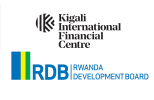Exploring Global Trends in Mineral Resources
Mineral resources have been the cornerstone of human civilization for centuries. From the iron used in ancient tools to the silicon in modern electronics, minerals play a crucial role in our daily lives. This article delves into global trends in mineral resources, examining their importance, distribution, and future prospects.
The Importance of Mineral Resources
Mineral resources are essential for the development and sustainability of modern societies. They provide the raw materials needed for construction, manufacturing, and energy production. Here’s why they are so vital:
Economic Growth
Minerals contribute significantly to the global economy. Countries rich in mineral resources often experience faster economic growth. These resources create jobs, generate income, and support various industries.
Technological Advancements
Minerals are the building blocks of technology. From smartphones to electric cars, modern gadgets rely heavily on minerals like lithium, cobalt, and rare earth elements. These minerals are crucial for producing batteries, electronics, and other high-tech devices.
Infrastructure Development
Mineral resources are fundamental to infrastructure development. Iron, steel, and cement are essential for constructing buildings, bridges, and roads. Without these materials, modern infrastructure would be impossible.
Distribution of Mineral Resources
Mineral resources are unevenly distributed across the globe. Some regions are rich in specific minerals, while others have limited access. Let’s explore the distribution of key mineral resources:
Africa
Africa is known for its abundant mineral resources. Countries like Nigeria, South Africa, and the Democratic Republic of Congo have vast reserves of minerals such as gold, diamonds, and copper. Nigeria, in particular, is rich in oil, natural gas, and tin.
Asia
Asia is a major player in the global mineral resources market. China, India, and Indonesia are among the top producers of coal, iron ore, and rare earth elements. These minerals are crucial for their industrial and technological development.
North America
North America boasts significant mineral resources, including coal, oil, and natural gas. The United States and Canada are key players in the global mining industry, producing minerals like gold, copper, and nickel.
South America
South America is rich in mineral resources, with countries like Brazil and Chile leading in the production of copper, iron ore, and lithium. These minerals are essential for various industrial applications.
Europe
Europe has a diverse range of mineral resources, including coal, iron ore, and bauxite. Countries like Russia and Ukraine are major producers of these minerals, supporting their industrial sectors.
Australia
Australia is a powerhouse in the mining industry. It is a leading producer of minerals like iron ore, gold, and bauxite. These resources are vital for global supply chains and contribute significantly to the country’s economy.
Trends in Mineral Resources
The global landscape of mineral resources is constantly evolving. Several trends are shaping the future of the mining industry and mineral resource management:
Sustainable Mining Practices
Sustainability is becoming a key focus in the mining industry. Companies are adopting eco-friendly practices to minimize environmental impact. This includes reducing carbon emissions, conserving water, and rehabilitating mining sites.
Technological Innovations
Advancements in technology are revolutionizing the mining sector. Automation, artificial intelligence, and data analytics are improving efficiency and safety in mining operations. These innovations also help in the exploration and extraction of minerals.
Renewable Energy Transition
The shift towards renewable energy sources is driving demand for certain minerals. For example, the growing popularity of electric vehicles is increasing the need for lithium and cobalt. Wind and solar energy technologies also require minerals like rare earth elements.
Urbanization and Infrastructure Development
Urbanization is driving demand for construction materials. As more people move to cities, the need for minerals like iron, steel, and cement is on the rise. This trend is particularly evident in developing countries.
Geopolitical Factors
Geopolitical factors play a significant role in the mineral resources market. Trade policies, political stability, and international relations can impact the availability and prices of minerals. Countries are increasingly focusing on securing their mineral supply chains.
Mineral Resources in Nigeria
Nigeria is one of Africa’s most resource-rich countries. It has a diverse range of mineral resources that contribute to its economy. Let’s take a closer look at some of the key mineral resources in Nigeria:
Oil and Natural Gas
Nigeria is a major oil producer and exporter. The oil and gas sector is a cornerstone of the Nigerian economy, providing significant revenue and employment opportunities. The country has vast reserves of crude oil and natural gas, primarily located in the Niger Delta region.
Tin
Tin is another important mineral resource in Nigeria. The country has substantial tin deposits, particularly in the Jos Plateau region. Tin mining has a long history in Nigeria and continues to be a vital industry.
Coal
Nigeria has significant coal reserves, mainly located in the eastern and northern parts of the country. Coal mining has the potential to boost Nigeria’s energy production and reduce its dependence on oil and gas.
Gold
Gold mining is gaining traction in Nigeria. The country has considerable gold deposits, particularly in the northern regions. The government is promoting gold mining as part of its efforts to diversify the economy.
Other Minerals
Nigeria is also rich in other minerals such as limestone, lead, zinc, and bauxite. These minerals have various industrial applications and contribute to the country’s economic development.
Future Prospects
The future of mineral resources is promising, but it comes with challenges. The mining industry must balance the need for resource extraction with environmental and social responsibilities. Here are some key considerations for the future:
Sustainable Development
Sustainable development will be crucial for the future of mineral resources. Mining companies must adopt practices that minimize environmental impact and promote social well-being. This includes responsible mining, community engagement, and transparency.
Resource Efficiency
Improving resource efficiency is essential. This involves optimizing mining processes, reducing waste, and recycling minerals. Efficient resource management can extend the lifespan of mineral reserves and reduce the need for new mining projects.
Innovation and Technology
Continued innovation and technological advancements will drive the future of mineral resources. Research and development in areas like automation, renewable energy, and materials science will shape the industry and create new opportunities.
Global Collaboration
Global collaboration is vital for addressing challenges in the mineral resources sector. Countries must work together to ensure fair trade, secure supply chains, and promote sustainable practices. International cooperation can help tackle issues like resource scarcity and environmental degradation.
Conclusion
Mineral resources are the backbone of modern society. They drive economic growth, technological advancements, and infrastructure development. As the global landscape of mineral resources evolves, it is essential to embrace sustainable practices, technological innovations, and international collaboration. By doing so, we can ensure a prosperous and sustainable future for the mining industry and the world.













































